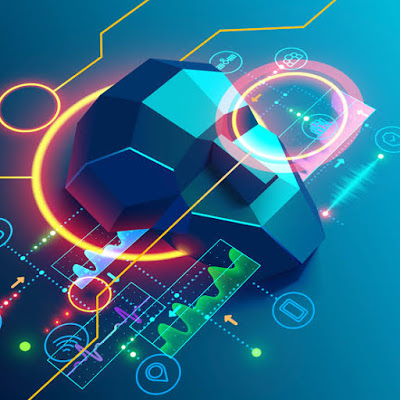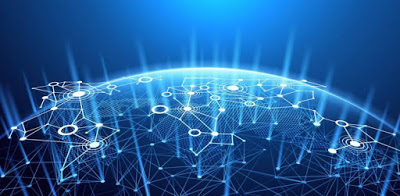
Technological advancement has been able to successfully bring to life concepts that were only seen in science fiction. Artificial intelligence with its ability to mimic the human thought process has created new frontiers through the possibility of machine-generated content. Through deep learning technology, artificial intelligence is able to “learn” by processing information such as sounds, patterns and speech.
This has successfully promoted some programs from merely being tools used by a programmer or end-user to create content to being content creators themselves.
WHAT IS ARTIFICIAL INTELLIGENCE?
For the purposes of this article, it is appropriate to delve into the meaning and a brief history of Artificial Intelligence. The idea of inanimate objects carrying out functions of intelligent beings has been in existence since the time of the ancient Greeks and Egyptians. However, the term “Artificial Intelligence” was first mentioned at a conference in Darmouth College, New Hampshire in 1956. The journey to the development of artificial intelligence was not so smooth. It experienced turbulent times characterized by inadequate funding but interest in producing intelligent machines was still present. In 1966, Joseph Weizenbaum invented a chatbot named “ELIZA” that was capable of carrying out conversations. Further, research into the field led to the invention of a program named “NETtalk” and the computer was able to speak for the first time in 1986. In 1997, IBM-owned chess computer named “Deep Blue” defeated former world chess champion Gary Kasparov in a game of chess.
In a nutshell, artificial intelligence or “AI” is the aspect of computer science involving the development of computer systems that function like humans. These systems are capable of learning and carrying out human-like activities such as making decisions and recognizing speech and facial expressions. Artificial intelligence has several use cases and it has made an impact in different sectors such as healthcare, aviation, and business. Machines making use of Artificial Intelligence can be termed to be “intelligent” machines.
In legal terms, AI is a combination of software and data. The software (instructions to the computer’s processor) is the implementation in code of the AI algorithm (a set of rules to solve a problem). What distinguishes AI from traditional software development is, first, that the algorithm’s rules and software implementation may themselves be dynamic and change as the machine learns; and second, the very large datasets that the AI processes (as what was originally called big data). The data is the input data (training, testing and operational datasets); that data as processed by the computer; and the output data (including data derived from the output).
Now, artificial intelligence is finding its way to everyday life. The invention of assistants such as Apple’s Siri, Google’s Google and Microsoft’s Cortana in smart devices allows people to regularly come into contact with artificial intelligence. It is therefore possible to say that we will be seeing more of artificial intelligence in the coming years.
OWNERSHIP OF INTELLECTUAL PROPERTY: ARTIFICIAL INTELLIGENCE OR THE HUMAN
The advent of artificial intelligence has given rise to legal issues that were not envisaged by existing legislation. Artificial Intelligence has the capability of taking decisions and creating content that qualifies for intellectual property protection. Thus, this raises the question of who is entitled to the intellectual property rights to content created by Artificial Intelligence.

There are various views as to who owns the intellectual property rights to AI generated content. One argument is that data generated by Artificial Intelligence should belong to the public domain. It is argued that since Artificial Intelligence is non-human, copyright cannot be ascribed to any content generated by it. A driving force behind this is the ideology that making data freely available will contribute to the development of Artificial Intelligence.
However, the issue of providing the necessary incentive for the development of Artificial Intelligence cannot be ignored. The potential commercial value of Artificial Intelligence-generated content is a factor that can promote investment and subsequent development in Artificial Intelligence technology. To this extent, deciding who to attribute ownership of intellectual property of Artificial Intelligence-generated content to can go a long way to facilitating the commercial viability of such content.
Jurisdictions such as the United States of America and Germany on the other hand have made it expressly clear that for a thing to be subject of copyright, it has to be created by a human being. The US Copyright Office has announced that it “will not register works produced by a machine or mere mechanical process that operates randomly or automatically without any creative input or intervention from a human author.”
Section 9(3) of the Copyright, Designs and Patents Act 1988 of the United Kingdom provides as follows:
“In the case of a literary, dramatic, musical or artistic work which is computer-generated, the author shall be taken to be the person by whom the arrangements necessary for the creation of the work are undertaken.”
The implication of this is that in countries where the independent thinking ability of a machine or artificial intelligence is under-appreciated save for its affiliation with a human inventor, liabilities caused by such a machine during normal and abnormal mechanical operations will fall on the inventor. Thus, the issues of Tortious offences common among Smart and Self-driving Cars shall be borne by the manufacturers. Product liability claims and conventional views of culpability and ethics are certain to be tested by these autonomous machines—like self-driving vehicles—where the current roadmap is for a mixed human and AI driver world.

Product liability law provides some framework for resolving such claims; with a “product” like an autonomous car, the law groups those possible failures into familiar categories: design defects, manufacturing defects, information defects, and failures to instruct on appropriate uses. Complications may arise when product liability claims are directed to failures in software, as computer code has not generally been considered a “product” but instead is thought of as a “service,” with cases seeking compensation caused by alleged defective software more often proceeding as breach of warranty cases rather than product liability cases. See, e.g., Motorola Mobility, Inc. v. Myriad France SAS, 850 F. Supp. 2d 878 (N.D. Ill. 2012) (case alleging defective software pleaded as a breach of warranty); In re All Am. Semiconductor, Inc., 490 B.R. 418 (Bankr. S.D. Fla. 2013) (same).
Nevertheless, in October 2017 Saudi Arabia accorded citizenship to a humanoid robot named Sophia making it the first robot to have citizenship. Sophia, which was developed by Hanson Robotics, uses artificial intelligence and is capable of carrying out conversations. It has been argued that conferring citizenship on Sophia has the effect of making her a legal person under international law.
Whether or not this is enough to confer intellectual property rights to content potentially created by Sophia to Sophia remains something to be considered. Under Saudi Arabian copyright law, Article 1 defines an author to be the “person who creates a work”. The term “human” is not expressly stated. However, this point does not appear to raise too much of a concern at this present time. Over time as artificial intelligence improves, it will be important to specifically determine in whom intellectual property rests.The legal framework at this point remains sketchy. The current legal position appears to be that artificial intelligence is not seen as an inventor in its own right but rather as a tool that serves the purpose of an end user.
AFRICA’S LEGAL POLICIES ON ARTIFICIAL INTELLIGENCE
In truth, most Countries in the world including countries in Africa are yet to come to termswith the advent of super computers. Contract laws, product liability and general tort laws will continue to guide the process and maintain law and order in our primitive state retrospectively. While regulation catches up, contracts should be carefully drafted to plug legal gaps, limit liability and appropriately allocate risk. Companies should develop internal policies and good corporate governance structures to record AI risks and judiciously manage AI implementation.
CONCLUSION
Beyond the immediate concerns, as autonomous AI applications develop, the fundamental question of whether AI should possess a legal status may be addressed by legislators worldwide. The issue of AI autonomy would raise the question of its nature in the light of the existing legal categories – of whether it should be regarded as natural person, legal person, animal or object – or whether a new category should be created, with its own specific features and implications as regards the attribution of rights and duties, including liability for damage. Unlike legislation, the protection provided by the courts is remedial not preventative. Courts assess liability and damages based on prior legal precedent. Cases where the harm is alleged to have been caused by AI applications ask the court to unravel novel technology and apply ill-fitting case law to make determinations of liability. For example, US common law tort and malpractice claims often center on human centered concepts of fault, negligence, knowledge, intent, and reasonableness. What happens when human reasoning is replaced by an AI application? What happens when the perpetrator or the victim is AI?
Conclusively, we cannot avoid the inevitable. Artificial Intelligence is a revolution set to render its predecessors in technology obsolete or at best, vintage. It is vital that the legislative arm of World governments keep track of the activities of AI as it influences modern day actions. The degree of originality in the creative works of an AI should also be a critical factor in pondering questions of Intellectual Property Ownership.
Judy-Vallery Imasuen is Tech lawyer with over a decade of experience in programming. She has her expertise in intellectual property law, blockchain technology and artificial intelligence. She can be contacted through imasuenjudy@gmail.com.
Eseoghene O. Palmer is an I.P Lawyer with valuable experience in litigation, Contract Law, Banking Law, Entertainment Law, Compliance and Information Technology Law. He can be reached on eseoghene.palmer@gmail.com
